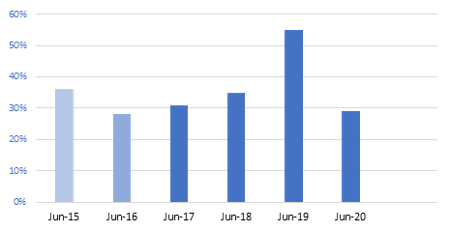Regions with lowest void periods revealed by landlord survey
Having researched the typical void period lengths UK landlords are currently experiencing, Intus Lettings has found in some parts of the UK this issue is practically non-existent.
The lettings agency polled 500 landlords from across the country in a bid to understand the changing demands of the buy-to-let market and educate the landlords and tenants it works with.
According to the data, landlords in the east of England experienced only 10 weeks of void periods over 12 months, with a quarter revealing their properties are empty for less than a month over the course of a year.
Similarly, 65% of landlords in Northern Ireland stated that their rentals are empty for three months or less and 16% said they had never experienced a gap between tenancies.
Other regions that topped the list for complete year-round occupancy include Wales with 30%, the west midlands with 24%, and the south west with 20% of landlords having never experienced void periods at their properties.
Over half of London landlords stated that COVID-19 had impacted tenancy levels. The research also revealed that 65% own more than one rental property.
Hope McKendrick, head of lettings at Intus Lettings, comments: “Void periods can be a landlord’s worst nightmare, as no matter what they may hope to make on a future sale in terms of capital appreciation, a key part of property investment comes down to rental yields.
“When you consider that the average annual income per rental property in the UK is over £20,000, even a few weeks of unoccupancy would equal a significant loss – it’s fantastic to see landlords generating such positive returns.
“Speaking from personal experience, we’ve seen the lowest ever levels of void periods across our property portfolio this year. Landlords are taking steps to make properties more desirable, as well as resolving any issues quickly.
“When sourcing new properties, I’d advise landlords to explore areas of high tenant demand. If there’s a strong job market, good transport links and a thriving social scene, you’ll have a wider choice of tenants and stand a higher chance of reducing void periods and increasing yield.”





